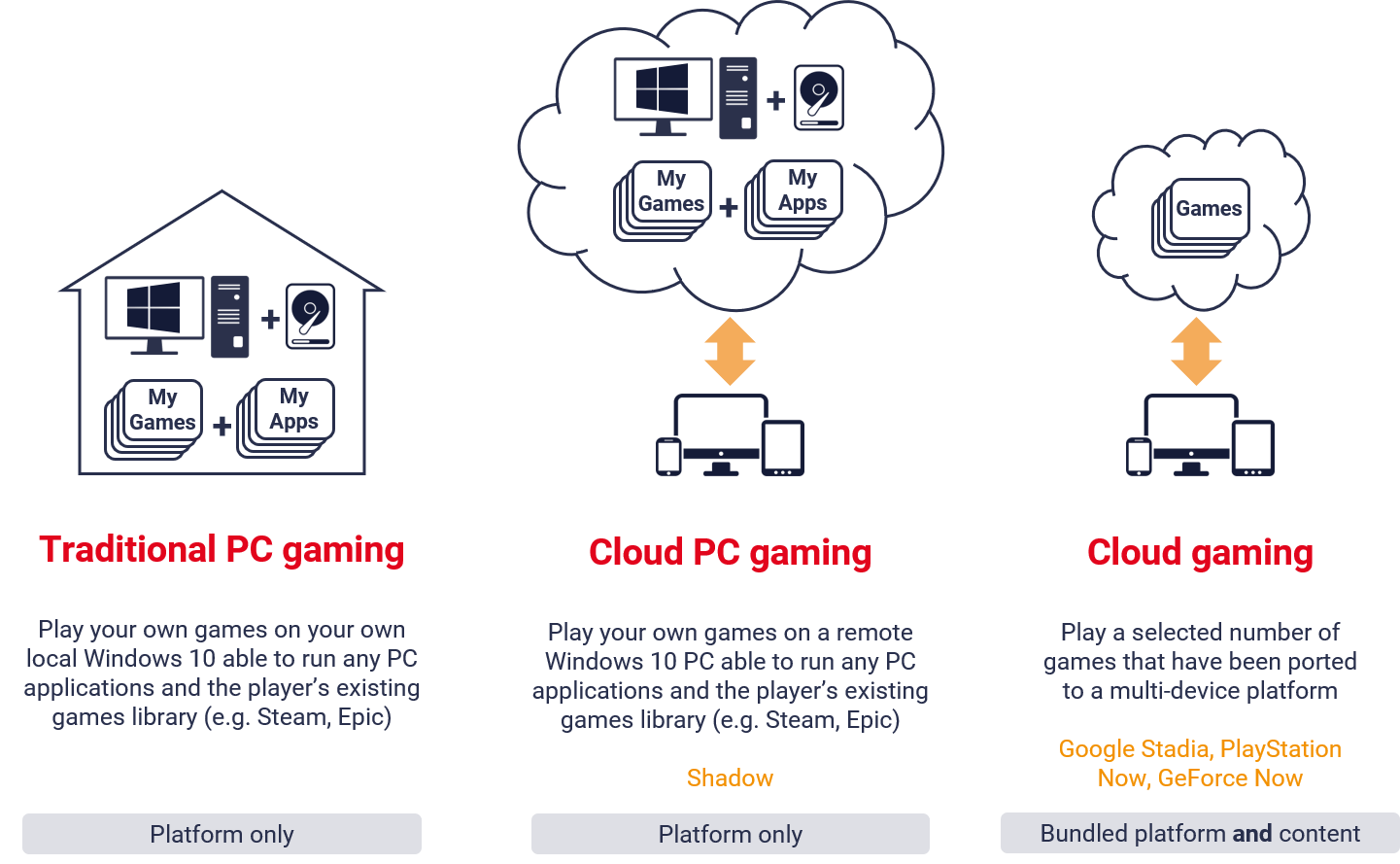
Three cloud gaming business models

Source: STL Partners, Shadow
Advances in telecoms networks and cloud computing are enabling the emergence of cloud gaming, where games are stored and run on a remote computer and results are live-streamed to a gamer’s local screen. This means gamers no longer need dedicated, high spec gaming hardware, only a good quality internet connection. Although cloud makes high-end gaming more affordable, delivering a quality experience on-the-go (rather than at home on a fibre connection) will require denser 5G and edge computing deployments.
On the business model, most cloud gaming providers currently bundle content and platforms into a subscription-based consumer proposition, but new variants are emerging. For example, Shadow introduced a platform-only proposition, where gamers bring their existing games library (from multiple publishers) to a cloud-based PC. Each proposition appeal differs by gamer segment. For example, hardcore gamers are likely to prioritise access to their chosen games library and therefore prefer traditional or cloud PC gaming , while casual gamers may value device and location flexibility offered by full cloud gaming more than choice of games.
Find out more in our research:
Download this article as a PDF
Read more about consumer services
Consumer insights pack
This document will provide you with a summary of our insights from our consumer services work
What is smart Wi-Fi?
Smart Wi-Fi refers to the use of capabilities in the Wi-Fi system that enhances the network service (reliability, availability and latency).
What is GCash?
In this article, we explore some of the reasons why GCash has become so successful and the ongoing challenges they will face.
AI in telecoms: Where is it having an impact
AI can have tremendous impact in telecoms. We look at three use cases where AI is being used effectively in customer facing scenarios.



